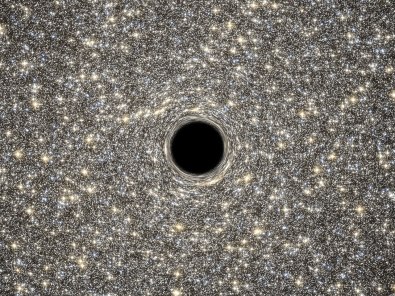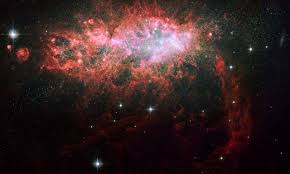By: Tyler Arsen
On a clear night, it is estimated that between 2,500 and 5,000 stars are visible in the sky. This seems like a large amount…and it is! The night sky illuminated by the stars has made for some beautiful photographs. However, if you were standing on a planet in the newly discovered M60- UCD1 galaxy, the sky would light up with at least 1 million visible stars.
This super-compact dwarf galaxy is only 300 light years across, compared with our Milky Way’s 100,000 light year diameter.
Even more interesting, this galaxy is home to a supermassive black hole that is 5 times larger than the black hole at the center of the Milky Way. It’s mass is a stunning 15 percent of the total mass of the galaxy. How did astronomers measure the size of the black hole? They used data compiled by the Gemini North 8-m telescope on Hawaii’s Mauna Kea.
After observing the stars in motion at the center of the galaxy, they concluded that their speed (370,000 kph) is faster than stars would be expected to move without a black hole. This super- compact dwarf galaxy may be the broken off piece of a large galaxy in collision with another. Because of the size of the black hole relative to the usual black hole to galaxy ratio, scientists estimate that the original mass of the galaxy was 50 to 200 times more massive than it is now.
Why is this important? Dr. Jay Strader of Michigan State University says that “This means that the seeds of supermassive black holes are more likely to be something that occurred commonly in the early Universe.” It also holds implications that there are many other compact galaxies in the universe that contain supermassive black holes. Researchers estimate that M60-UCD1 is more than 10 billion years old, so the study of this super-compact dwarf galaxy would reveal information about the early stages of the universe.
P.S.
Check out this blog to learn more about dwarf galaxies!
Sources :
http://www.sci-news.com/astronomy/science-supermassive-black-hole-dwarf-galaxy-m60- ucd1-02156.html
http://unews.utah.edu/news_releases/smallest-known-galaxy-with-a-supermassive-black-hole/


I totally wrote a post on this using that same Science News article! Fascinating.
LikeLike
No way! I’ll definitely mention it at the bottom of my post then. 🙂 So interesting right?
LikeLiked by 1 person
Absolutely fascinating! The post (though finished) is still a draft, I’ll leave you a comment when it’s published (which will happen sometime tonight).
LikeLike
I have that post I mentioned published now. http://perseshow.wordpress.com/out-of-proportion-tiny-galaxy-boasts-a-supermassive-black-hole/
LikeLike